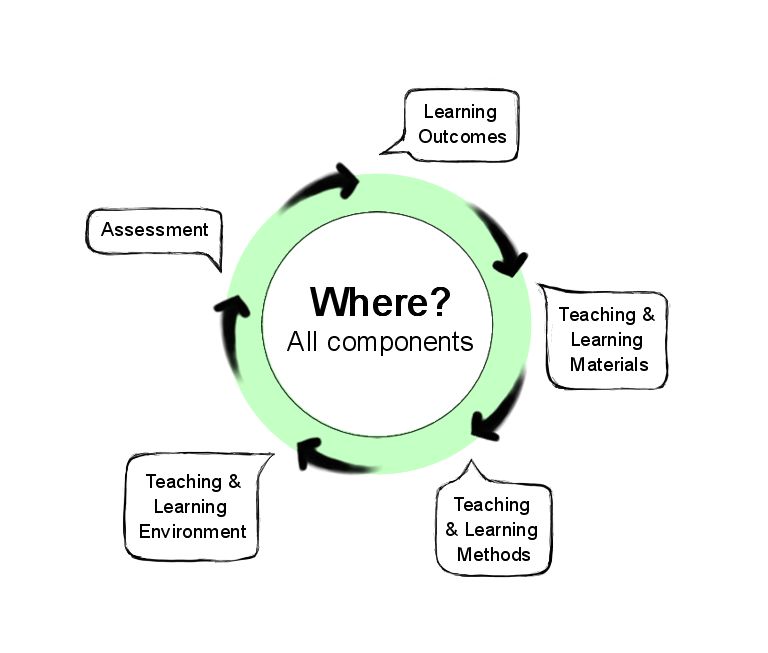Where do Accessible Education principles apply?
Accessibility can be taken up and applied to all components of a course or lesson. This is described further in the chart below:
In all components of teaching, including:
| Learning Outcomes | Intentions for what students are to learn |
| Teaching and Learning Activities | How students will learn the intended learning outcomes:
Materials: Materials students will use to learn the intended learning outcomes
Methods: Teaching and learning approaches that will be used to facilitate student learning of intended learning outcomes
Environments: Spaces in which learning of intended learning outcomes will occur
|
| Assessments | How students will demonstrate their achievement of intended learning outcomes and how instructors will evaluate this learning
|

The diagram above depicts how there are things we can do to mediate barriers throughout all components of teaching and learning to enhance access for all. Accessible Education involves moving through these components in an ongoing, cyclical way.
